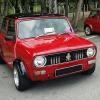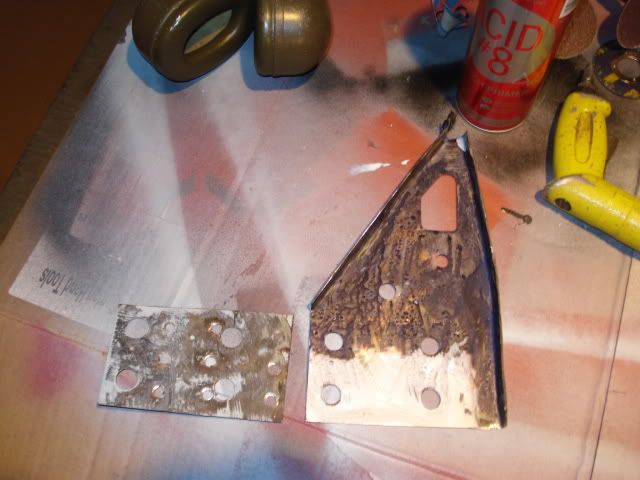I thought so. The mixture of mounts is causing the cracking. It always does, even on average roads. You should preferably go to all solid, with reinforcing plates on the rear mounts. Otherwise, it is just going to happen again regardless of how well it is repaired. The poly mounts are completely useless anyway.
There is a fundamental issue with the main tower bolts, which may need careful attention. The shoulder of the bolt ideally needs to be up tight against the subframe, and the head of the bolt, plus any spacer that is needed, also needs to be in firm contact with the top surface of the crossmember. Any dimensional tolerances prevent that from happening, because one or the other will make contact first. I would be inclined to make the top spacer just a couple of thou too thick, and allow a very small amount of crush on the crossmember when the bolt is torqued down tight. It might not matter in most cases, but if the roads are as you say, every little bit helps, and you really should try to aim for the bolt being bottomed and getting good clamping load. If the bolt shoulder is not bottomed tightly against the subframe, you may get fretting, and failure of the thread.
One other method is to put a stack of thick Belleville washers, all facing the same way, under the bolt head, and ensure that when the bolt bottoms against the subframe, the stack is compressed almost flat. If the face the same way, the spring rates are additive, and you get a good clamping load. Using them as springs, they normally face alternate directions, which you don't want here. You need a clamping load, which can be calculated from the spring compression, of maybe 1 to 2 tonnes each side, to ensure that there will be no movement, and therefore fretting, under worst case conditions. The internal spacer in the crossmember needs to be in good condition to take the load.
http://www.schnorr.c...sc-springs.html
Some people have achieved the same result by fitting the top half of a poly tower mount, and a solid spacer between subframe and bulkhead, with the poly providing the amount of crush needed to take up the tolerances. That is very hit and miss, and may work ok sometimes, but you can't tell how much compressive load the bolt is applying to the joint faces, because the crush properties of the poly bush are completely uncalibrated.
Another possibility is to machine the hexagon head of the bolt off in a lathe. (I don't mean cut it off, just reduce it to the same diameter as the bolt.) Thread the end. Tighten the modified bolt into the subframe, put your top spacer on, followed by a lockwasher and nut, and torque up. All tolerances taken up at both ends. Should be good.
Actually the best way of getting a very firm and fatigue-free structure is to put the car back to the configuration which Issigonis designed, with twin tower bolts or studs, solid fromt mounts, and the rear mounts attached at the stiffest point, the junction of lower bulkhead and floor, but that is a lot of work. Nevertheless, earlier cars with solid mounted subframes are more robust, but may be more dangerous in frontal impacts.
Another thing to think about is that on the old two bolt subframes, the spacer between subframe and bulkhead was rather large, as it spanned both bolts, which if I recall correctly were 2.5 inches apart, and formed a good load spreader. Nothing to stop you fitting larger spacers, except that you can't just turn them up on a lathe, as they are not circular, and you would waste a lot of material. The original lower rubber would give a rough indication of the size to aim for, as it was much the same size as the old metal spacer.
I am sure that you will be glad to know that your HiLos have nothing to do with the problem. They do put the bottom of the car at risk if you hit a very bad pothole, just because it is lower, but in general will not increase the peak spring (rubber cone) load significantly. Some HiLos have a shaped platform to effectively increase, for initial deflection only, the spring rate, but under severe bump conditions that becomes irrelevant.






















